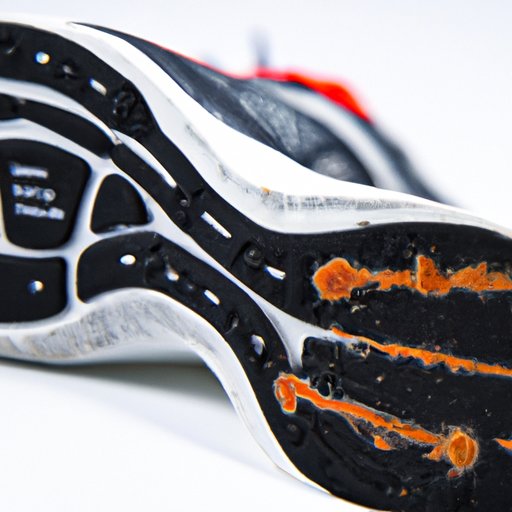Introduction
Running is one of the best ways to stay fit and healthy. Having the right running shoe for your mileage is essential for providing the protection and support you need. So, how many miles for running shoes? This article will provide you with a comprehensive guide on choosing the right running shoes for your mileage and extending their life.

A Guide to Choosing the Right Running Shoe for Your Mileage
When it comes to selecting the right running shoe for your mileage, there are a few factors to consider. The type of running you do, your body weight, and the surface you run on all play a role in choosing the right shoe for you. Different types of running shoes offer different benefits, so it’s important to understand which type of running shoe is best suited for your needs.
For instance, if you’re a heavier runner, you may want to opt for a stability or motion control shoe, as these types of shoes provide extra support and cushioning. If you’re a lighter runner, you may prefer a neutral shoe, which is designed to provide flexibility and allow the foot to move naturally. Trail running shoes are designed to provide grip and traction on uneven terrain, while racing flats are designed for speed and agility.
How Often Should You Replace Your Running Shoes?
General guidelines recommend replacing your running shoes every 300-500 miles, depending on the type of running you do and the surface you run on. However, it’s important to pay attention to signs that your running shoes may need to be replaced, such as excessive wear and tear or lack of cushioning and arch support.
If you notice any of these issues, you should replace your running shoes regardless of the mileage. In addition, if you switch up your running routine (e.g. from road running to trail running), you may need to invest in a new pair of running shoes to suit the new terrain.
The Science Behind Knowing When to Change Your Running Shoes
The impact of different running surfaces can affect the durability of running shoes. For instance, running on concrete or asphalt can cause more wear and tear than running on a softer surface like grass or dirt. The cushioning and arch support of your running shoes also plays a role in determining when to replace them, as these features provide the shock absorption and support needed to protect your feet.
If you notice that your shoes have lost their cushioning and arch support, then it’s time to replace them. You can use a visual inspection to check for signs of wear and tear, or use a ruler to measure the thickness of the sole to get an indication of how much cushioning is left in the shoe.
What’s the Ideal Mileage for a Pair of Running Shoes?
The average lifespan of running shoes depends on the type of running you do and the surface you run on. On average, most runners can expect to get 300-500 miles out of a pair of running shoes before needing to replace them.
However, there are a number of factors that can affect the lifespan of running shoes, including the type of running you do, the surface you run on, and even your body weight. Heavier runners tend to wear out their shoes faster, while lighter runners may be able to get more mileage out of a pair of shoes.

Tips for Extending the Life of Your Running Shoes
There are a few simple steps you can take to maximize the life of your running shoes. First and foremost, it’s important to rotate between two pairs of running shoes. This will help to evenly distribute the wear and tear on both pairs, allowing them to last longer.
In addition, it’s important to keep your running shoes clean and dry. After each run, wipe off any dirt or mud from the shoe and allow them to air dry. You can also use a soft brush to remove any debris from the treads of the shoe.
Finally, you can also try using inserts or orthotics to add extra cushioning and arch support to your running shoes. This can help to extend the life of your shoes and provide additional comfort and support.
Conclusion
Running shoes are an essential part of any runner’s gear, and having the right shoe for your mileage is key to protecting your feet and maximizing performance. When choosing a running shoe, it’s important to consider the type of running you do, your body weight, and the surface you run on. Generally speaking, running shoes should be replaced every 300-500 miles or when signs of wear and tear appear.
By following the tips outlined in this article, you can extend the life of your running shoes and ensure that you always have the right shoe for your mileage. Happy running!


